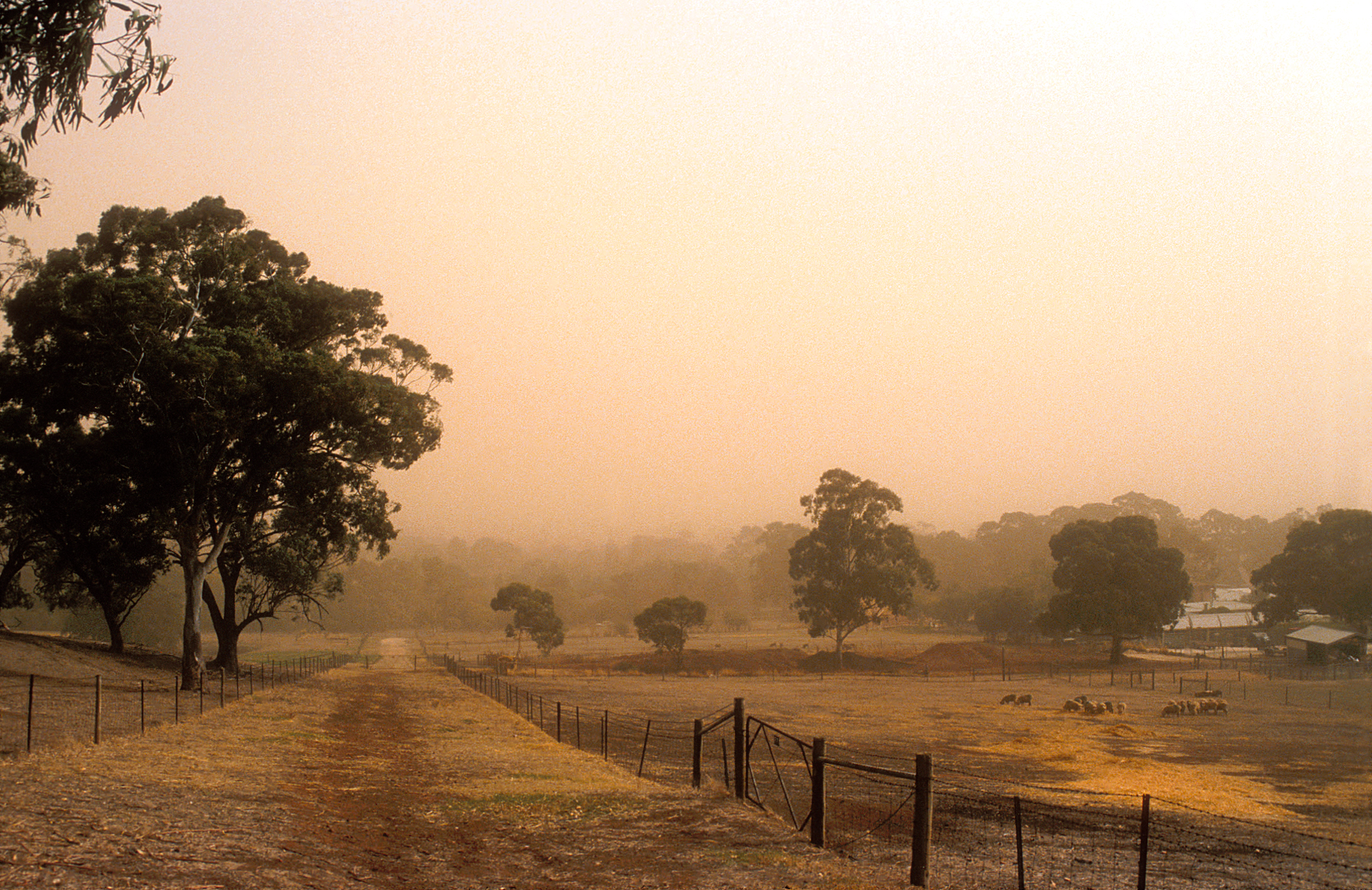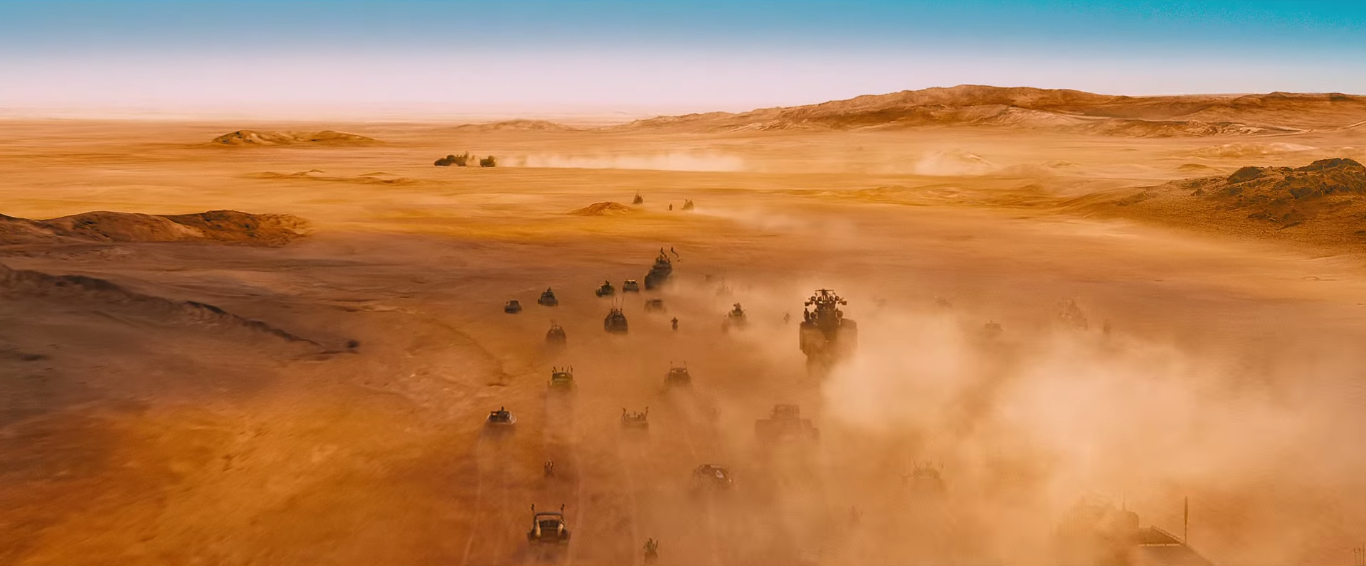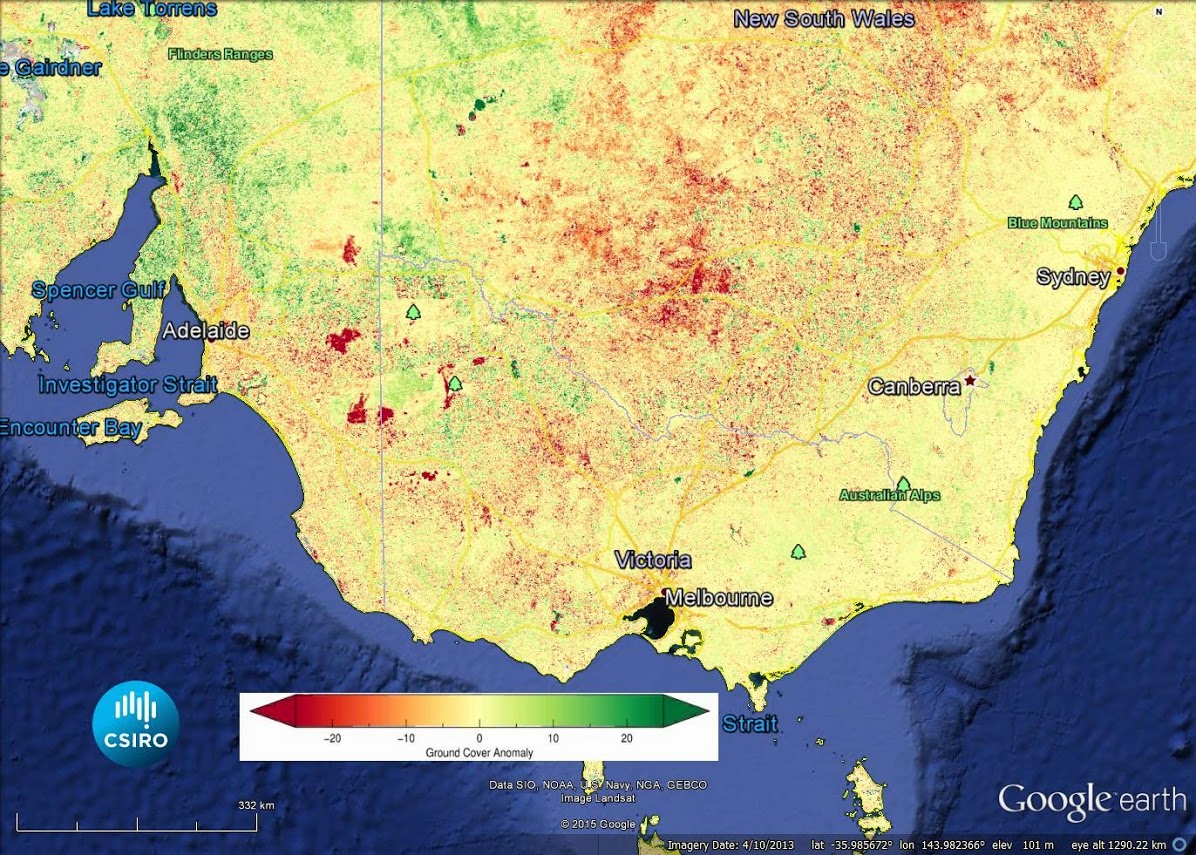
Dust events, like this storm over paddocks on the outskirts of Adelaide, SA, affect many parts of our community.
The world often thinks of Australia as a desolate, dust-ridden landscape (that is, when they aren’t freaking out about our abundance of deadly creatures). And the recent box office hit, Mad Max: Fury Road, certainly did a good job of reintroducing audiences to the landscape this wide brown land is famous for – one that is parched, brutal and above all else, dusty!
If you think that the environment that George Miller has so lovingly filmed for Mad Max is an outlandish, unreal take on the Australian landscape – you’d be right, it was shot in Namibia (though Broken Hill was the original set of choice for the movie makers). This doesn’t change the fact that dust is one of the defining characteristics of our continent, and it could be about to get dustier.
Why? Because the Australian Bureau of Meteorology has made the call: El Niño’s back, meaning that large parts of Australia could look like a lot like the Fury Road.

Look at all that top-soil loss, AKA dust. Image: Max Max: Fury Road
Australia’s climate and topography make it particularly vulnerable to topsoil loss. And topsoil loss is exactly what dust is. Almost all Australian soils are geologically old, because most of the continent hasn’t had the conditions that cause soil renewal for many millions of years.
Renewing soil needs earthquakes, volcanic activity, glaciers and rivers, things notably rare or absent in much of Australia. Earthquakes can build mountains, bringing fresh rocks to the surface, and volcanoes spew out lava. Both these are eventually ground down into small particles by the movement of glaciers and rivers. But without these, we’re left with a thin coating of not-very-good soil, weathered, leached, and prone to blowing away.
So keeping an eye on dust is a way to monitor soil health. We can’t – unfortunately – create the conditions for soil renewal, but we can target remediation where it’s most needed. Australia’s a big place, though, and sparsely populated in the areas where dust is likely to be stirring. How do we monitor it?
The maps shows the ground cover anomaly in April 2015. The red areas indicate low ground cover, meaning the soil is more exposed and prone to erosion.
You’ll be pleased to know there’s some Furiosa… we mean furious, high-tech monitoring going on. Soil scientists from the NSW Office of Environment and Heritage, CSIRO, the Australian Bureau of Meteorology and the Australian Government Department of Agriculture keep an eye on soil health, using tools like the groundcover monitoring system. This uses satellite data to keep track of the level of vegetation in soil – soils with less than 50 per cent cover are more prone to wind erosion.
Increased dust conditions – caused by wind erosion – can be a significant problem for the environment, community health and the economy. A massive dust event, like the storm that hit NSW in 2009, was estimated to cost the state’s economy around $300 million. So it’s important to manage the risk.
And we aren’t relying solely on satellite images. We also utilise small-scale local observations. Which, in a proud Australian tradition, involves groups of volunteers to be our feet and eyes on the ground.
The Community DustWatch project involves local residents helping with the readings from solar-powered aerosol-monitoring instruments located in strategic areas. They also maintain the machines. But their local knowledge is vital, because the monitoring devices measure all aerosols, and can’t identify whether the substance is dust, smoke or fog. The volunteers can.
By connecting the insights of the DustWatchers program with our high-tech monitoring tools we’re able to form a useful – albeit dusty – picture of country’s soil conditions. Find out more about our soil work here: https://www.csiro.au/en/Research/AF/Areas/Sustainable-farming/Soil-water-landscape
The project is funded by a combination of Australian Government state and local-level agencies. The Australian Government Department of Agriculture, CSIRO, the Bureau of Meteorology and the Terrestrial Ecosystem Research Network support much of the research, data and infrastructure used by the DustWatch program.



12th July 2015 at 5:07 pm
I was disappointed to find no mention of how we are actually avoiding Fury Road. Sure, you’re measuring soil/vegetation cover (with the help of volunteers), but what on-ground activities are preventing the topsoil loss?
Consider these ideas – shorter fallow periods/leaving fields bare at less windy times of year/vegetative fencing/prioritising vegetation cover over weed removal/adding biosurfactants or mulch to bare soils/large scale revegetation programs, perhaps beginning with road and paddock boundary hedges etc etc
22nd June 2015 at 8:39 pm
Hard-hoofed stock on ancient and fragile surface equals dust. Want to see what arid australia should look like, with its missing terrestrial suite of mammals? Go look at Scotia Sanctuary AWC. Lichens etc knit the soil surface, where it is broken by scratching mammals the holes fill with litter/seeds etc waiting for next rain. Its the beef/sheep/goat “grazier” industry which causes dust. Want to see where the millions of tons of topsoil goes? Go look in the ice hold of any fishing vessel off the southcoast in summer. Sometimes red with dirt (and insects)
18th June 2015 at 1:13 pm
good!